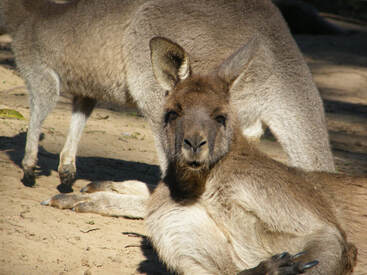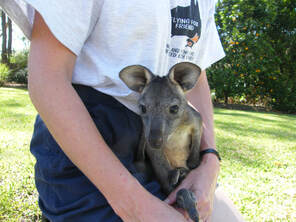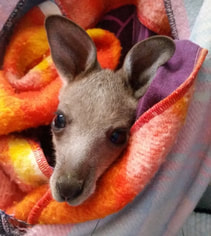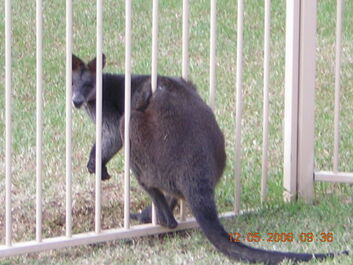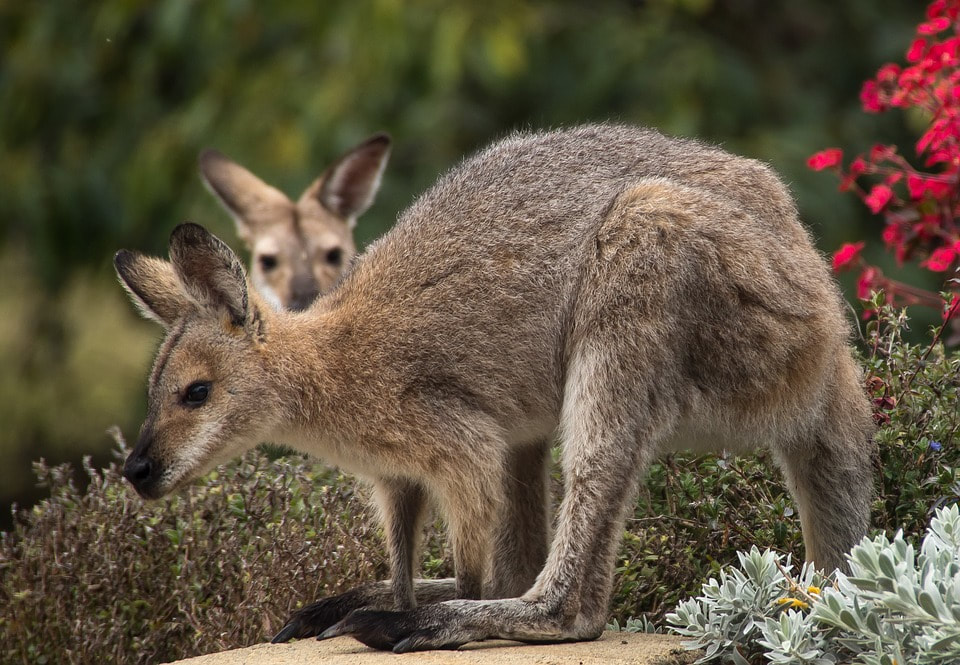|
MACROPODS |
Macropod literally translates to "Big Foot". The species include kangaroos, wallabies, wallaroos, pademelons and quokkas. In the area in which we operate, we most often see Eastern Grey Kangaroos, Swamp Wallabies, Red-neck Wallabies and a few others. Weighing in at up to 66 kg, the Eastern Grey is the largest macropod in this area, and one of the largest in Australia (after the Red Kangaroo, which grows up to 85kg)
Do not try to feed orphaned joeys. They need to be the correct body temperature before being rehydrated. They need special teats and special milk (Marsupials are lactose intolerant)
|
What to doIf you find a sick or injured kangaroo or wallaby:
|
Want to know more?Kangaroos are Australia's most recognised animal, known throughout the world. But because these animals tend to live in the same environment we do, they are slowly losing their habitat to urban development and agriculture.
|

